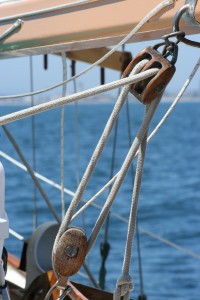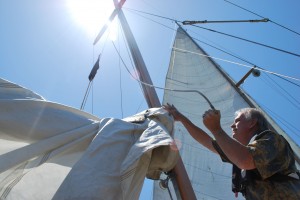What is the greatest invention of all time? The most common answer is “The wheel,” but as important as wheels are, the great South American empires didn’t have them. No, I think the greatest invention was rope. I am fascinated by the stuff.
Did you know the great Viking long boats weren’t held together with nails? They lashed planks of their ships with rope. From suspension bridges to flag poles, rope is found everywhere and holds so many things together. It’s amazing!
I love rope and while Jan sat swinging in a rope hammock suspended from the mizzen boom of our boat reading a good book, she swayed in warm, tropical breezes. I was unraveling the end of a length of line and splicing it into an eye for a new dock line.
Have you ever really looked at a piece of rope? It is made up of long strands wrapped around each other and twisted into bundles. The bundles are in turn twisted around other bundles until they form the right dimension for the project you are working on. A splice simply twists fibers together into a new form that carefully maintains the strength of the line.
I stared at my fuzzy handiwork for a bit and thought about how a rope could represent the church. The strength of a congregation comes from the strength of her individual members, their lives entwined. Alone, a single strand or a single member is pretty weak. There is no way you could securely fasten a boat to a dock or raise a sail or anchor a ship with a single strand but with enough filaments, carefully wrapped around each other, no load is too heavy and no job is too great.
“Honey, I’m stuck in this hammock. Would you go below and pour me another drink?” she asked.
“Knot now,” I objected. “I’m all tied up.”
“Very puny. Now take off that Viking helmet and please get me something cold to drink!”
Whether you’re talking about the filaments of a rope or the members of a congregation, we really do need each other!



